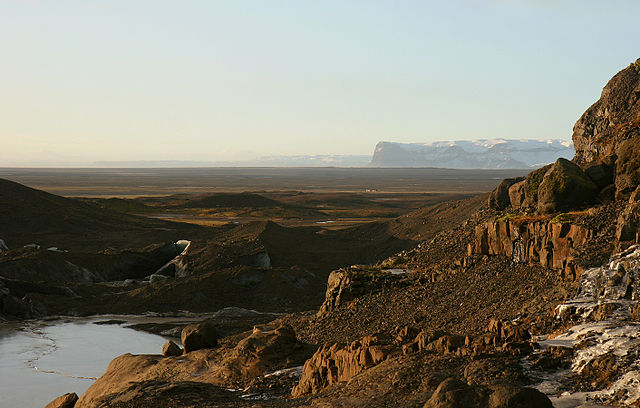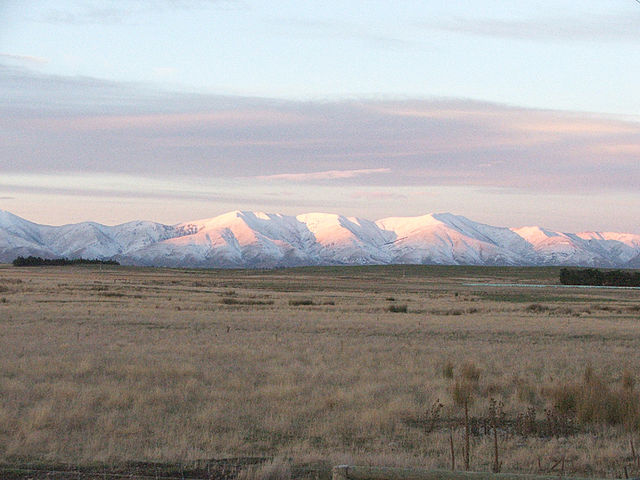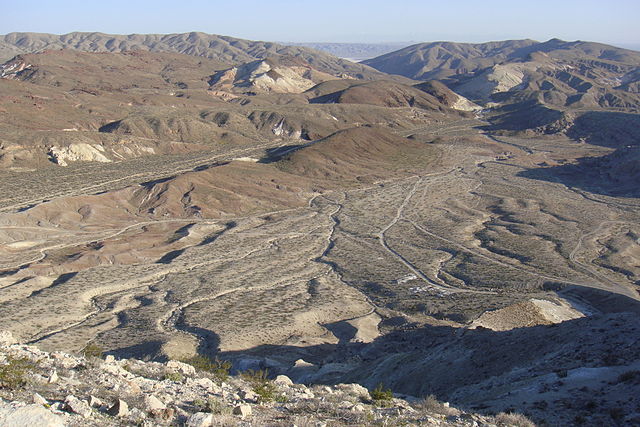An outwash plain, also called a sandur, sandr or sandar, is a plain formed of glaciofluvial deposits due to meltwater outwash at the terminus of a glacier. As it flows, the glacier grinds the underlying rock surface and carries the debris along. The meltwater at the snout of the glacier deposits its load of sediment over the outwash plain, with larger boulders being deposited near the terminal moraine, and smaller particles travelling further before being deposited. Sandurs are common in Iceland where geothermal activity accelerates the melting of ice flows and the deposition of sediment by meltwater.
Skeiðarársandur in Iceland, viewed from its eastern margin at the terminus of Svínafellsjökull glacier
The western edge of Skeiðarársandur in Iceland shows the diffuse drainage channels typical of sandur.
Unimpeded by topographic obstructions, sand-bearing katabatic winds can be fierce enough on Skeiðarársandur to strip paint from cars. Here, sand is blown in the air in front of the peak Lómagnúpur.
In geography, a plain, commonly known as flatland, is a flat expanse of land that generally does not change much in elevation, and is primarily treeless. Plains occur as lowlands along valleys or at the base of mountains, as coastal plains, and as plateaus or uplands. Plains are one of the major landforms on earth, being present on all continents and covering more than one-third of the world's land area. Plains in many areas are important for agriculture. There are various types of plains and biomes on them.
The Kakanui Range dominates the eastern horizon of the Maniototo Plain of New Zealand
Montane plains as seen in Horton Plains in Sri Lanka.
A small, incised alluvial plain from Red Rock Canyon State Park (California).
A flood plain in the Isle of Wight.







